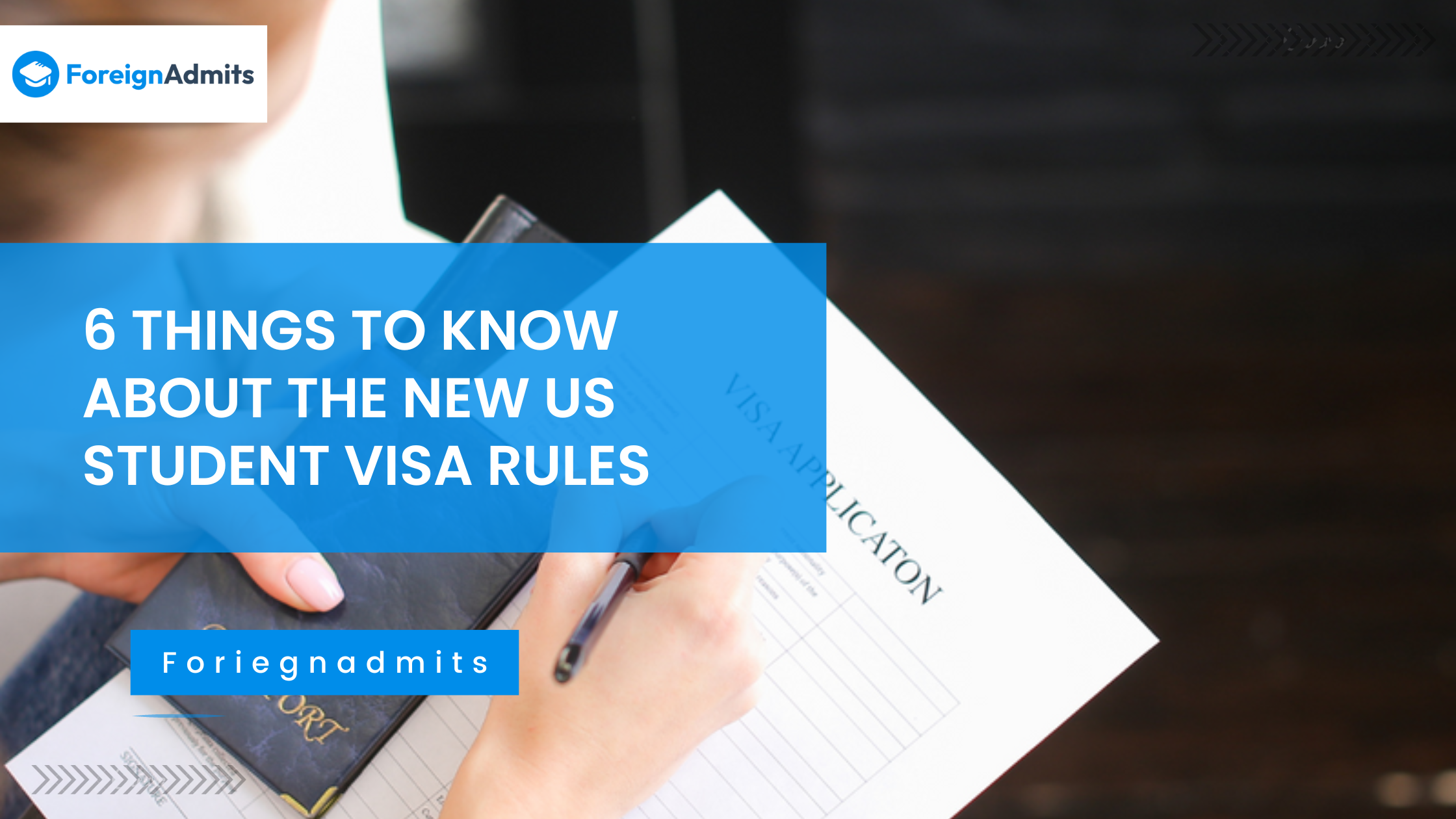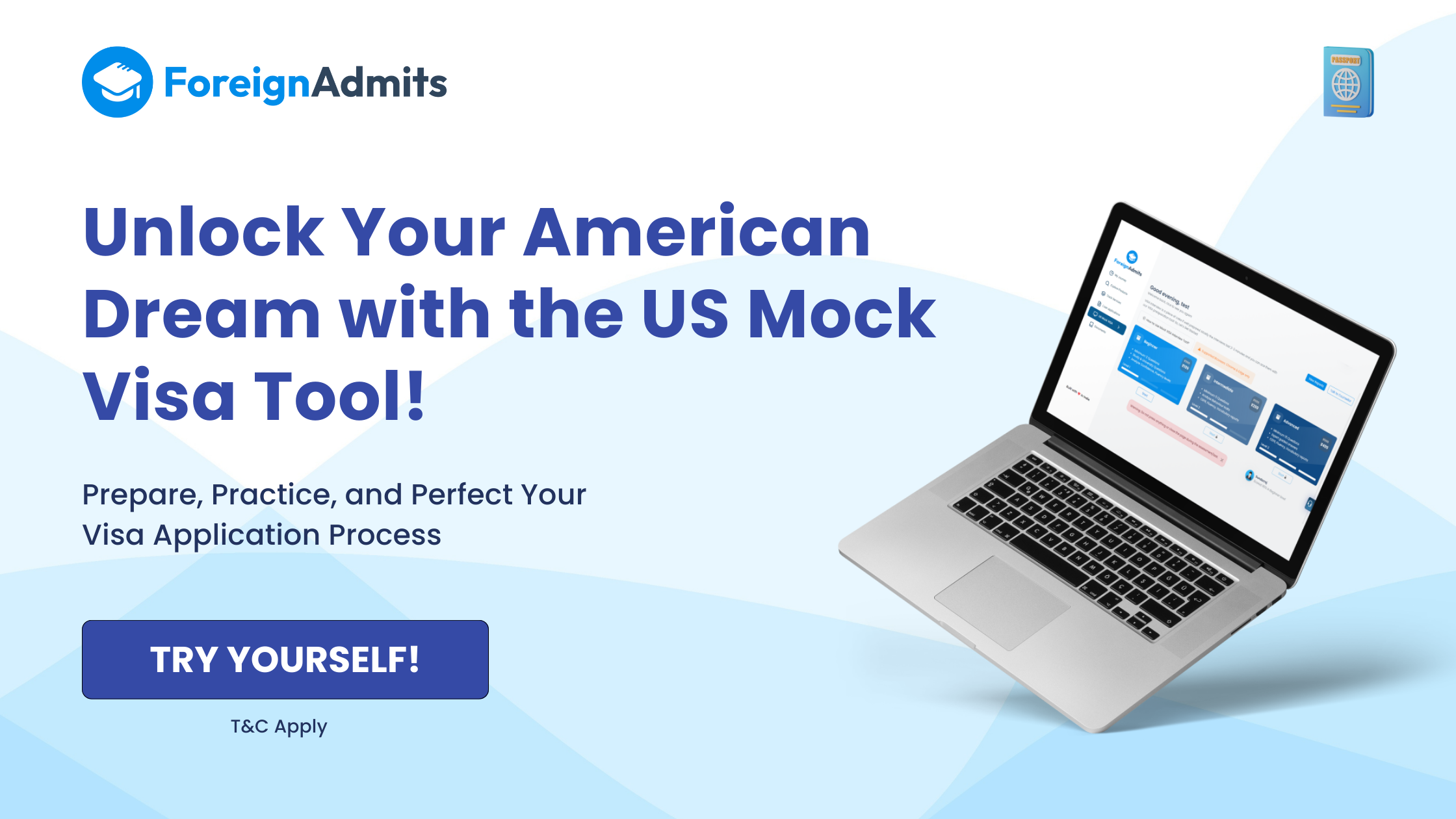6 Things to Know about the New US Student Visa Rules
US Students need to be aware of new Visa rules who want to further their studies in the US should become familiar with the F-1 US student visa application procedure. With some planning and direction, you can join the more than a million other international students. Who are now studying abroad in the United States. This step-by-step guide to US student visa has been put together to assist you in getting started and will explain what an F-1 visa is, how it operates, and what is required to obtain one.
What Is a F1 Visa?
International students can come to the US and study at institutions approved by the Student and Exchange Visitor Program with the help of the F1 US student visa. Which is a non-immigrant visa (SEVP). It is the most common sort of student visa for those looking to enroll in a US university or college. You may only apply for an F1 visa after your application has been accepted by a recognized US institution.
The course you enroll in will determine how long you will be an F1 student and for how long. The I-20 paperwork that you will receive from the university you wish to attend will have the program’s expiration date on it. You can use this to get an approximate sense of how long you can stay in the country. You must finish your degree before the stated expiration date.
Your application for optional practical training might be accepted (OPT). This will allow you to work in the US for up to 12 months in a profession associated with your studies. You can request an extra two years of employment in a relevant profession for STEM graduates.
You must go back to your native country within 60 days of graduating if you don’t have any extensions or additional training. If you’re interested in learning more, ForeignAdmits can assist you in investigating what you can accomplish with your F1 visa once you graduate.
The 6 important changes
- It is not difficult to obtain a student visa for the United States from India. You must adhere to all regulations and allow enough time to prepare and submit your papers.
- You must be admitted to a degree programme at a recognized US higher education institution. Before you may submit an application for an F1 student visa from India.
- According to Vice President of the University of South Florida (USF), Roger Brindley, President Trump’s most recent executive order on immigration changes is actually good news for immigrants wanting to study in the United States.
- “The concentration on the most highly skilled workers could actually have the potential. To assist international graduates of American universities,” Brindley told Indian students and education advisors. Brindley emphasized the necessity for international students to fill the country’s skill deficiencies.
- Heflin responded, “Last year we had approximately the right quantity of applicants compared to pre-Covid years. I was asked about the influence of the epidemic on this summer’s visa application process. However, we are noticing a spike in interest this year. He continued, noting that the rise in applications for student visas is due to a number of factors. Including the state of the Indian economy and the unmet demand for 2020–2021.
- “Like business have had many issues in bouncing back, we too have problems in going back to pre- pandemic level of visa issuances. While at present we are issuing two-third the number of visas that we did before the pandemic, we expect to be closer to 100% by 2023”.
Speaking to students. USF faculty members noted that the median annual salary for students receiving a master’s degree from USF’s College of Engineering or College of Business has been $70,000 (Rs 44.7 lakh) or $65,000 (Rs 41.6 lakh). Respectively, a year – which is higher than the salary range specified by the new guideline.
In actuality, it is these qualified candidates who the US seeks to entice. Around 10,000 of USF’s 50,000 students are from 140 different countries, with India leading the pack. Computer Science and BAIS are the most popular selections among Indian students. With enrollment in the College of Engineering and the College of Management, respectively.
We at ForeignAdmits recognise the significance of this choice. Every step of the journey, we are here to support you. Choosing the proper university to be accepted and receive scholarships.
There is a staff of knowledgeable counsellors at ForeignAdmits. Depending on your specific requirements, we may offer you individualised advice. For a terrific start, contact us right away. We look forward to assisting you in achieving your academic and professional objectives!
Can F1 International Students Work in the US?
You will be able to work in the US while on an F1 student visa, yes. However, there are a few conditions and guidelines for F1 visa holders:
- Only part-time employment is permitted on campus when the academic term is in session.
- You are only permitted to work a total of 20 hours per week.
- If your university gives its consent, you might be allowed to work off-campus.
If your university permits it, you will be able to work full-time during breaks from classes. Regarding employment opportunities for international students on the F1 visa, see USCIS.gov.
Make sure to get your DSO’s permission before looking for work throughout your studies.
Remember that you will have a grace period of 60 days to depart the US when your programme is finished. If you want to prolong your stay, go to a ForeignAdmits advisor to learn about your alternatives. Such as changing schools or going back to school. To check at your alternatives, you can also consult the ForeignAdmits F1 extension guide.
Create a list of your next tasks now that you are aware of how international students’ US non-immigrant visas operate. Your chances of getting accepted to an American university are better the earlier you start completing the prerequisites for a USA study visa.
FAQ
1. How much bank balance is required for US student visa 2021?
There is no fixed minimum bank balance for US student visa. You should have sufficient amount ranging from 10,000 USD and above.
2. What is the 5-month rule for F1 students?
The Student and Exchange Visitor Information System (SEVIS) will terminate a student’s record. If they are absent from classes or out of status for five months, according to the “five month rule.”
3. How many months bank statement is required for US student visa?
Frequently, institutions and visa consulates ask for 6 months’ worth of bank statements (the tenure may vary though).
USA MOCK VISA INTERVIEW
Ace USA Visa Interviews with our AI platform.
The final step to your US visa is a Visa interview with an officer from the US consulate. Ace the interview with proven tricks and techniques.
Check out the tool in action here!



